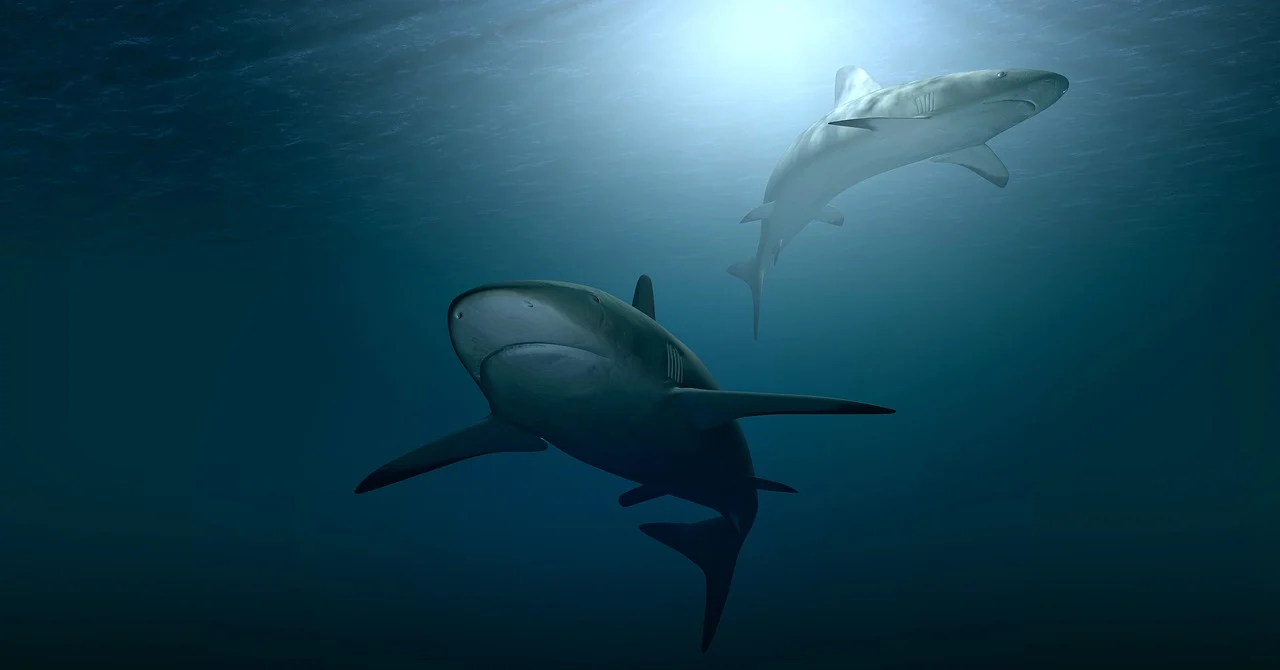In general, the deeper into the sea you go, the more it has to offer, however, sharks prefer to stay close to the coastal area in shallow waters, but this does not mean sharks cannot go deeper. In fact, there are a few species that have a habit of living on the seafloor. So, it’s actually confusing how deep sharks can go underwater, and we are going to put an end to this quest.
Sharks are among the fascinating marine creatures, and their habitat mainly consists of the aquatic environment. So it won’t be a surprise if sharks are able to go beyond 1000 or even 10,000 feet down the water. But how deep a shark can go needs to be determined.
Not only it’s important for the divers but for anyone going near the water, even for recreational purposes. Seeing sharks with your own eyes itself is an adventurous experience, let alone swimming with them or watching them leaping out of the water.
So, without any further discussions, let’s get to know about the exact depth of the water the sharks can go to.
How Deep can Sharks go?
Sharks have been living in the world’s oceans for centuries, yet over 500 different species of sharks have been discovered, and many more are yet to be explored. With that said, all sharks have different features and characteristics and also how they live in water. The behavior, food preferences, size, and color, in short, you will find diversity in species.
As per the species, you will find many of the sharks swimming in shallow waters, but at the same time, there will be sharks dwelling in deep waters.
It is essential to keep in mind that the situation below 700 feet gets harder as pressure increases, the temperature gets cold, decreases visibility, and less oxygen. But for the sharks living in deep waters, it might not matter at all as they are very adaptable. Sharks, in fact, have very good eyesight, and they are not deaf or blind.
It has been reported that sharks can dive as deep as 10,000 feet in the ocean. However, the deepest shark dive has been recorded at 12,000 feet.
Want to know about a few names of the sharks living deep in the sea? Continue to read as we discuss it below.
Why do sharks dive deep into the open water?
Many sharks’ species are thriving in the twilight zone – an area extended from 600 to 3,300 feet or sometimes spotted even more at depth below the surface of the ocean. This region of the ocean has no light, high pressure and less availability of oxygen with cold temperatures. Despite many difficulties, the number of sharks living in this zone is 10 times more than we see near the shoreline. The reason behind the deep dive of sharks is the food such as squids, algae, and crustaceans which are in abundance at the bottom. Furthermore, to protect themselves from enemies and other predators, sharks swim deep to hide in the dark.
What Sharks are living in deep waters?
Although there are many types of sharks, deep-sea sharks are by far the most distinctive looking as they have not been as well explored as the others. Why not get to know about a few of them? So, let’s begin.
Megamouth sharks
Megamouth sharks are rarely seen due to the fact that they live in deep waters and hardly come near the surface. As the name implies, the megamouth shark is easily recognized due to its large head, and it swims in the water while the mouth is wide open.
Don’t forget to read about how to identify sharks if you find it difficult.
Frilled sharks
Frilled sharks are everywhere in the Atlantic and Pacific Oceans, but they rarely encounter humans, as they live thousands of feet below the surface of the water. Frilled sharks control and maintain their buoyancy in deep ocean waters by means of a cartilaginous skeleton.
Do you know that sharks don’t have bones?
Greenland shark
Due to living deeper in the oceans, the meat of the shark is turned poisonous and can cause serious health issues to humans. However, the Greenland shark is neither aggressive nor comes in contact with humans as they hardly come near the surface.
Besides, the Greenland shark is also known to be among the largest species, with an approximate length of 21 feet. Being a top predator, Greenland sharks prey on smaller sharks, a variety of fishes, and squids.
Cookiecutter shark
Recorded as deep as 12000 feet, the cookiecutter shark is found in all oceans of the world. It gets its name due to the fact that it leaves round shaped bites on its prey just like a cookie. Because of their small size and the fact that they are found in deep waters, cookiecutter sharks are not considered dangerous and hardly come in contact with humans.
Goblin shark
A rare species of shark, the Goblin shark is primarily found on the ocean’s bottom. Goblin Sharks feed on fish, mollusks, and crabs, and they do not pose a serious threat to humans. They live in quite deep waters, so human contact is unlikely to happen. A long snout having a flat shape is what helps distinguish the goblin shark easily. Regarding food preferences, the goblin shark prey on bottom-dwelling fishes, crustaceans, and other marine species.
Conclusion
Sharks are the prominent creatures of the oceans, and they tend to live there all their lives since they cannot survive without water. The depth of the water, however, can vary with each shark species. There are some that prefer to live in shallow waters while others like to spend their lives down the ground. It is said that sharks can live up to 10,000 feet underwater, and a few of them have gone beyond this point as well.
The main thing is to respect and treat sharks with care as they are important for us and for the healthy oceans too.







